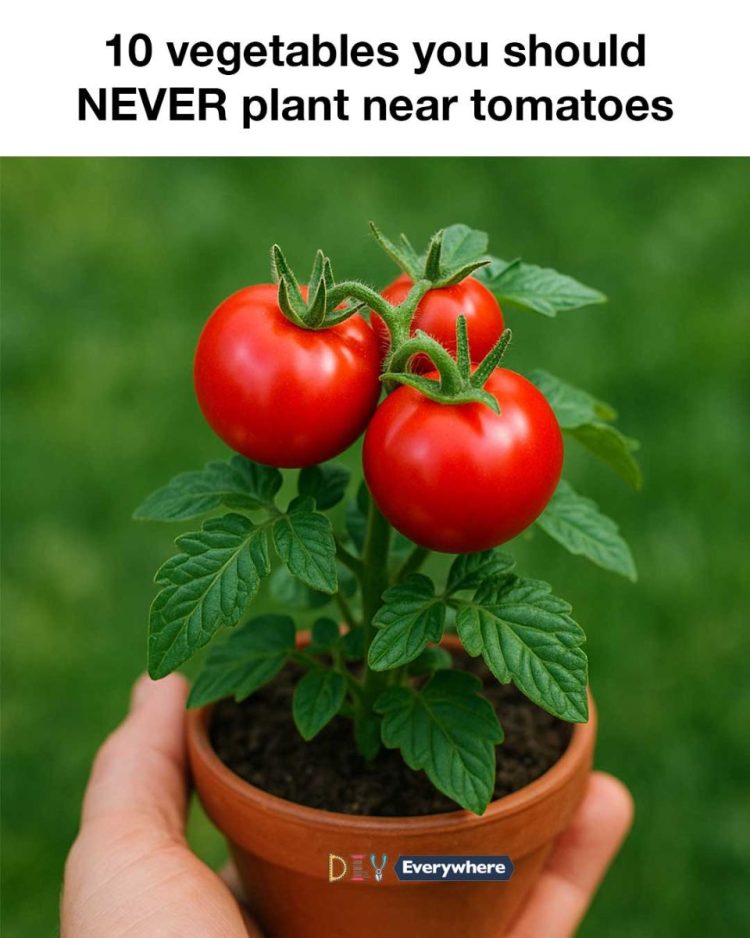Corn is a heavy feeder that requires a lot of nitrogen, just like tomatoes. When planted together, these two crops can compete for the same nutrients, leading to reduced growth and lower yields for both. Additionally, corn can grow quite tall, potentially shading tomato plants and limiting their access to sunlight.
Another concern with planting corn near tomatoes is the risk of attracting pests like the corn earworm, which can also target tomatoes. To avoid these issues, it is best to plant corn and tomatoes in separate areas of the garden, ensuring that each has access to the resources they need.
7. Potatoes: A Risk of Shared Diseases
Potatoes and tomatoes are both members of the Solanaceae family, which means they are susceptible to similar diseases, such as blight. Planting them near each other can increase the risk of disease transmission, potentially devastating both crops.
Additionally, potatoes and tomatoes can compete for nutrients, as they both require similar soil conditions. To minimize the risk of disease and nutrient competition, it is advisable to plant potatoes and tomatoes in different areas of the garden, ideally rotating their locations each year to further reduce disease risk.
8. Eggplant: Too Close for Comfort
Eggplant, like tomatoes, is a member of the Solanaceae family. This means they are susceptible to the same pests and diseases, such as the Colorado potato beetle and verticillium wilt. Planting them together can increase the likelihood of these issues spreading between the plants.
Moreover, eggplants and tomatoes can compete for nutrients, as they both require similar growing conditions. To ensure healthy growth and minimize pest and disease risks, it is best to plant eggplants and tomatoes in separate areas of the garden.
9. Peppers: Competition and Disease Concerns
Peppers, another member of the Solanaceae family, share similar growing requirements with tomatoes. This can lead to competition for nutrients and space, potentially reducing the growth and yield of both plants. Additionally, peppers and tomatoes are susceptible to the same diseases, such as bacterial spot and tobacco mosaic virus.
To minimize these risks, it is advisable to plant peppers and tomatoes in different sections of the garden. This separation will help ensure that both plants have access to the resources they need and reduce the likelihood of disease transmission.
10. Walnuts: A Toxic Neighbor
Walnut trees produce a chemical called juglone, which is toxic to many plants, including tomatoes. When planted near walnut trees, tomatoes can suffer from stunted growth, wilting, and even death due to juglone toxicity. This chemical is present in all parts of the walnut tree, including the leaves, roots, and nuts.
To protect tomatoes from juglone toxicity, it is essential to plant them at least 50 feet away from walnut trees. This distance will help ensure that the tomatoes are not affected by the toxic chemical, allowing them to grow and produce fruit without hindrance.
11. Broccoli and Cauliflower: Not Tomato-Friendly
Broccoli and cauliflower, like cabbage, are members of the Brassicaceae family. These vegetables can compete with tomatoes for nutrients, particularly nitrogen, which is crucial for their growth. Additionally, they can attract similar pests, such as aphids and cabbage worms, which can easily spread to tomatoes.To prevent nutrient competition and pest issues, it is best to plant broccoli and cauliflower in a different section of the garden, away from tomatoes. This separation will help ensure that both types of plants can thrive without interference, leading to a more productive garden.

10 vegetables you should NEVER plant near tomatoes
ADVERTISEMENT
For Complete Cooking STEPS Please Head On Over To Next Page Or Open button (>) and don’t forget to SHARE with your Facebook friends
ADVERTISEMENT